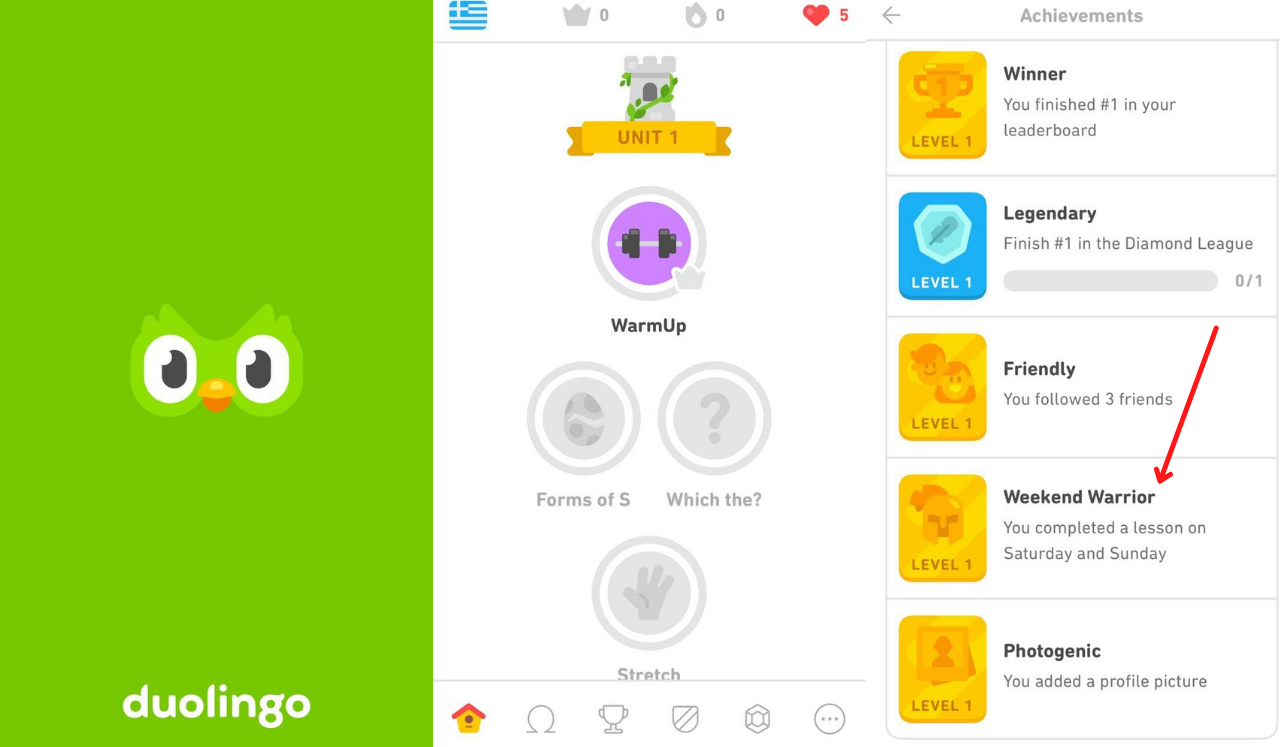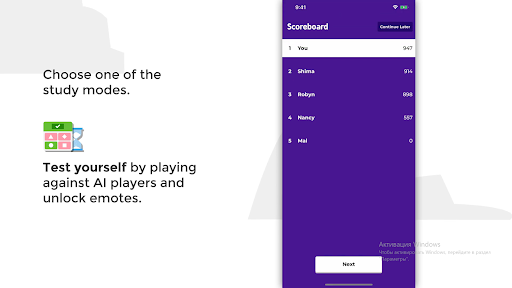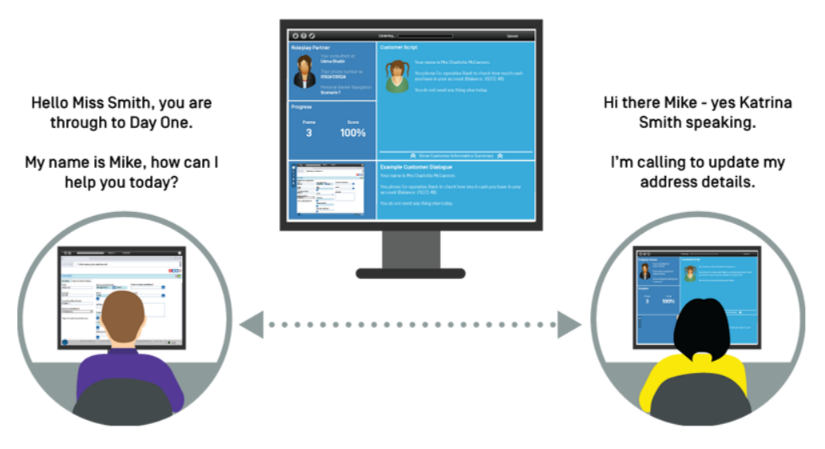7 Engaging Elearning Gamification Strategies
Online learning has gradually replaced the standard ways to get information, and this trend has accelerated in the last two years amid the pandemic. Nowadays, we can’t afford to rely on offline learning alone; we need to prepare for uncertainty and switch to elearning as fast as possible.
For an elearning website or app to be successful, the online course should be easy to navigate and contain crucial navigation elements and other features for a great user experience. The sad truth, however, is that only 13% of the enrolled students finish online courses.
While attracting students is easy, retaining them and keeping them hooked is hard. So how can you increase their engagement? Employ gamification. Read this piece to find seven elearning gamification strategies in elearning that, if correctly applied, create a unique learning experience.

What Is Gamification in Elearning?
Gamification is about incorporating game elements into non-gaming activities. This allows you to complete stages by complying with specific rules. It turns a task into a dynamic experience and enriches our daily routines with a bit of extra fun. It can be implemented in anything from education to exercise.
You may remember the “Pokemon Go” phenomenon when people gamified their walks by using an app to collect virtual Pokemons. This demonstrates how increased excitement can completely transform our habitual experiences.
Gamifiying elearning succeeds because of the following principles:
- the desire to be at the top of a leaderboard;
- earning points as incentives;
- completing stages and tasks to advance to the next level;
- moving to a certain goal;
- overcoming obstacles;
- meeting deadlines;
- seeing the progress and unlocking new features.
When applied to education, the learning process becomes more pleasant with the game elements, as they add enjoyment, play, openness, innovation, and challenge. Gamification also performs well in the workplace; it boosts employee engagement and aids in retention, matching intellectual skills with emotions.
7 Ways to Use Gamification in Elearning
1. Digital Badges
Users may miss or lose track of valuable content in the abundance of materials. One way to solve this problem is to offer them success badges for completing training milestones. Gamification badges are unique icons for recognizing and rewarding specific student accomplishments. You can show the learner all possible badges to remind them of the course content that they have yet to complete.
When do you grant these badges? You can classify what students can achieve and how you praise them for that. For example, learners can get a badge when they go from one module to the next or when they expand their skill set. You can also give these badges when people finish a lesson in a predefined period or when they return to the app daily for a certain period of time, like a week or a month.
Badges can accompany or substitute other grading systems such as points or percentages. Keep in mind that digital badges are not the end goal for which students strive. Instead, they encourage students to continue the learning path, while earning micro-rewards to achieve a bigger prize. Learners keep going so they can win or collect more.
Below is an illustration of Duolingo’s rewards for various activities, in which you’ll obtain the Weekend Warrior achievement if you practice the language on weekends (Saturday and Sunday).

2. Avatar Customization and Upgrades
Another reason people respond positively to gamification is the ability to choose characters. People associate themselves with well-known figures, celebrities, or fictional personas with traits they possess or would like to have. That’s why many video games start with the option to create, customize, or select a character or avatar.
When you allow creating avatars in your digital course, students will use this character to interact with the content or the other users. You can further allow them to update their avatars as part of the prizes you provide when completing certain tasks.
The avatar upgrade is similar to achievement badges, but the strategy implementation is different. Instead of icons or trophies, you open extra outfits, tools, or other customizations.
Suppose the course topic is health and safety in the workplace. You can provide a better protection costume as a prize for correct answers. Users can then show their characters on company leaderboards, chats, and other internal platforms including a social media wall where avatars and achievements are displayed publicly.
Look at the example below from TechTrek, an elearning solution. You can customize the avatar to learn and interact with other TechTrek characters.

3. Instigate Competition through Leaderboards
A little healthy rivalry is a stimulus to progress. Just look at most games; they would quickly become pointless, lonely, and uninteresting without the opportunity to see how others do.
So try fostering competition among team members in an online course. Another option is to allow users to compare themselves with anonymous individuals or with previous success, to maintain a high level of motivation.
That’s where leaderboards help. They show users where they stand in relation to others. Leaderboards appeal to our competitive nature and serve as an effective engagement mechanism, encouraging us to continue playing and learning. They can also be used to notify students about outperforming peers or losing their place when peers beat them.
With that said, you should be careful with introducing leaderboards; they may lead to creating a hostile training environment. You can avoid this by maintaining a light tone and emphasizing peer-to-peer support so that learners assist one another rather than being obsessed with others outranking them. You can also implement social learning practices, e.g., social media collaboration, discussions, and webinars to make the experience more human.
For example, Kahoot! lets users compete with AI players and earn emotes, which are animated characters you receive as an award for your progress.

4. Storytelling
Storytelling is a profitable technique for various purposes. Brands implement it in their marketing strategies to boost sales, and it’s a crucial leverage for gamification in elearning as well.
What can keep players engaged throughout the game? Backstories and cutscenes where you don’t intervene; instead, you follow the characters’ conversations. The storyline appears at regular intervals or stages, such as bringing down a fort, saving a city, rescuing a princess, etc. These episodes create a certain mood, igniting the neurons and hormones in the player’s brain.
So, don’t overlook storytelling in game-based training. This strategy requires a skill to compose captivating stories. You may have come across missions in many online courses. However, they often lose the storyline as the course progresses, causing student attrition.
The most effective strategies to master storytelling in elearning include:
- Tailoring content to a specific audience: Who is the potential recipient of your training content? Determine the target audience, their needs, motivators, and pain points to establish an emotional connection.
- Sticking to a defined message and goal: Your storytelling should match your overall idea and what you want to teach your audience.
- Choosing practical learning formats: Such as interactive online courses.
- Saturating your content with audiovisual resources: like videos, audio, infographics, polls, and interactive ebooks.
A case in point is World War One, a digital documentary by the Guardian. It’s a half-hour film created in partnership with the British Academy. You can listen to historians, explore original news reports, and interact with maps and other exclusive materials to see the First World War from various angles, which make you part of historical events.
5. Personalizing Interaction with the Content
Personalization creates strong bonds with the learners. Imagine a class where children don’t stick to a one-size-fits-all approach to learning. Instead, each follows their own pace.
Digital learning provides even more room for personalization. It’s about giving learners what they want, according to their speed, content, and other preferences. A game-based course allows students to input their name, track their behavior, and build a unique experience that doesn’t repeat other learning styles.
How do you personalize elearning? Consider all channels you use, from the website and emails to social media, and address the learners by their names. It’s like calling someone by the name in a conversation, which stresses the importance of the mentioned person.
Personalization in elearning can be applied to the following aspects:
- The interface, such as the font sizes, colors, backgrounds, and themes.
- Content, which includes audio, video, text, graphics.
- Interactions between learners and teachers, or learners with each other.
- The pace of learning.
These aspects can be adjusted to every participant through gamification, quizzes, online discussions, adaptive learning approaches, tutorials, and other methods.
6. Role-Playing
Role-playing puts students in realistic situations where they apply their knowledge, behavioral patterns, and decision-making abilities. People train their skills as close to real life as possible, which is beneficial for various cases, such as health, anti-bribery, and anti-terrorist training.
You can implement role-playing in elearning by utilizing interactive videos or interactive storytelling. Note that they should mimic the realistic situation and include all possible people and locations. Allow students to choose a character or role. Also, encourage them to switch various roles; this will give them a better understanding of the procedures and needs of all the involved people.
Simulate decisions or challenges for the learner to overcome, with the help of negotiations and analysis. You can accomplish this through multiple-choice questions. The chosen answer alters the course of the story or the product creation, according to your teaching goals. Role-playing also streamlines feedback collection to fill the gaps between the learner and the course manager.
Day One Technologies created an ‘eRoleplay’ to let users practice their customer service skills. The system simulates a person (user) calling the support service, while the partner acts as a specialist trying to solve the problem.
The client has information about their role, the reason for the call, and possible phrases. And the person on the other end of the line answers the first person’s questions and tries to achieve their goal (persuade the client to order something or resolve the conflict).

7. Using Timers and Sense of Urgency
Competing against time is fascinating. Turn a task into a race to persuade people to finish it on time. This strategy works not only with children but with grownups as well. For example, demonstrate a timer or a pop-up to hurry users with filling out a form. Another option is to configure the content to disappear when time runs out.
Send push notifications to remind users of their progress, what they have yet to achieve, and how much time they have to do it. Suppose you want learners to finish the first lesson; you can then set a deadline of five days for them to do so after enrolling in a course.
This strategy also helps in training staff working under pressure. Doctors, emergency response groups, and other time-sensitive roles make time-pressured decisions. Time-sensitive digital courses can create such an environment. They simulate scenarios when personnel don’t have much time to think, enhancing their reaction.
Below is an engaging elearning game teaching users to protect corporate data. The idea is to finish everything on time before a colleague’s birthday party and satisfy the manager with due attention to the company’s information. You need to protect the laptop screen, documents, and drawers. These activities take time, which is illustrated on the timer.

Final Say
Why is gamification so powerful for digesting information? It stems from childhood; we love prizes, certificates, trophies, and honor badges to acknowledge our efforts. Gamification principles, such as deadlines, competition, and progress, perform well regardless of our age is.
Consider the “likes” feature on social media; scrolling down the feed won’t be as fascinating without it. Just like that, we get gold stars and rewards for everything we do, from buying and eating to working out and riding in a taxi. No wonder virtual learning also follows suit and implements gamification.
Gamify the learning experience with badges, points, awards, contests, and leaderboards. These strategies will keep your learners interested and pleased while sustaining the atmosphere of friendly rivalry.
.
Read More
10 Ways to Improve Hybrid Learning in the Classroom
5 Ways Generation Z Can Benefit from M-Learning
12 Features a Good Elearning App Needs













Lindsey John
March 20, 2024Great post on eLearning gamification strategies! The breakdown of key elements and implementation tips is incredibly helpful. Looking forward to trying out these engaging techniques in my own courses. Thanks for sharing!
Kotobee
April 21, 2024Hi Lindsey!
Thank you for your positive feedback! We’re glad you found this article helpful. 😊